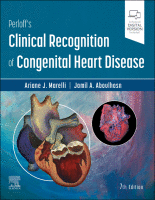Physical Address
304 North Cardinal St.
Dorchester Center, MA 02124

Historical Notes Coronary is derived from the Latin coronarius (pertaining to a crown) translated from the Greek stephanos (wreath) that refers to the crown-like or wreath-like arrangement of arteries that encircle the heart. This chapter deals with the coronary circulation—arterial…

Historical Notes In 1952, Lev called attention to congenital hypoplasia of major components of the left side of the heart. In 1958, Noonan and Nadas referred to these malformations as the hypoplastic left heart syndrome . At the severe end…

Historical Notes In 1897, the British Medical Journal published a necropsy description of congenital pulmonary arteriovenous fistulae and, four decades later, the anomaly was recognized in a living subject. In 1865, Babington called attention to familial epistaxis, and in 1876,…

Anomalous vena caval connections comprise a wide range of malformations that vary from minor to major, and that occur in isolation or with coexisting congenital heart disease. Persistent left superior vena cava occurs in 0.3% of the general population and…

Historical Notes Truncus arteriosus was recognized in 1798, and the clinical and necropsy findings were described in 1864. Humphreys summarized the reports up to 1932, and Lev and Saphir critically reviewed published accounts during the following decade. The malformation accounts…

Historical Notes In 1797, Matthew Baillie called attention to “ a singular malformation in which the pulmonary artery arises from the left ventricle and the aorta from the right ventricle .” Seventeen years later, John Farre used the term transposition…

Historical Notes In 1858, Thomas Peacock described hearts in which: The auricular sinuses are separated by a more or less complete septum, and there are generally two auriculoventricular apertures, while the ventricle is either wholly undivided or presents only a…

Historical Notes Tricuspid atresia was described in 1817, but almost a century elapsed before the great arterial relationships were defined. Because of the morphologic heterogeneity of the malformation, “manifold anatomic combinations can result in this haemodynamic arrangement.” , Anatomical considerations…

Historical Notes Thomas Peacock, in his first edition of Malformations of the Human Heart , wrote: … the orifice or trunk of the pulmonary artery is entirely impervious. A case of this description was described by John Hunter in 1783…

Historical Notes Antonio Maria Valsalva, anatomist and pathologist, was born in 1666 in the historic Emilia-Romagna region of northern Italy. The sinuses that bear Valsalva’s name consist of three small outpouchings in the wall of the aorta immediately above the…